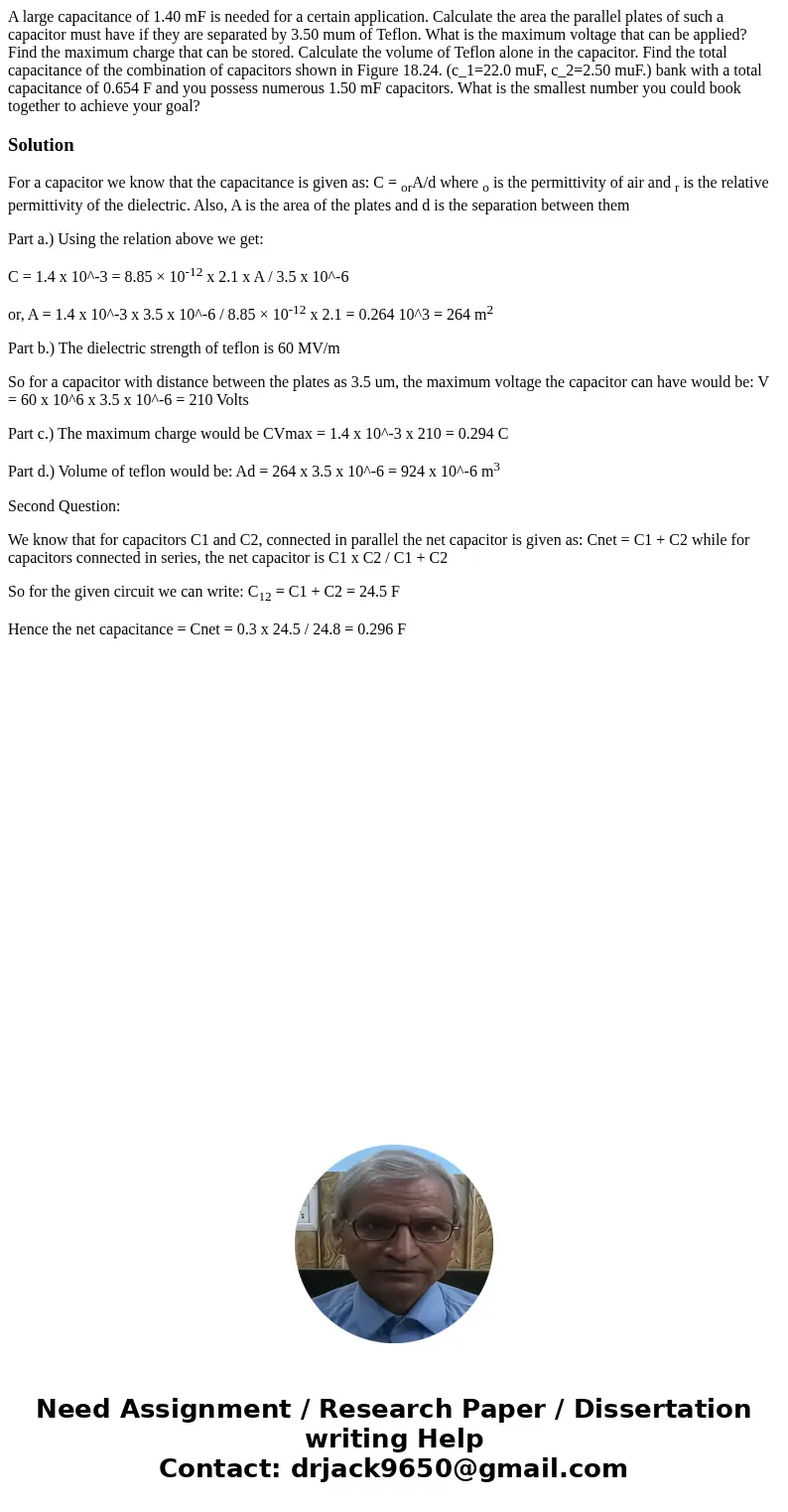A large capacitance of 140 mF is needed for a certain applic
Solution
For a capacitor we know that the capacitance is given as: C = orA/d where o is the permittivity of air and r is the relative permittivity of the dielectric. Also, A is the area of the plates and d is the separation between them
Part a.) Using the relation above we get:
C = 1.4 x 10^-3 = 8.85 × 10-12 x 2.1 x A / 3.5 x 10^-6
or, A = 1.4 x 10^-3 x 3.5 x 10^-6 / 8.85 × 10-12 x 2.1 = 0.264 10^3 = 264 m2
Part b.) The dielectric strength of teflon is 60 MV/m
So for a capacitor with distance between the plates as 3.5 um, the maximum voltage the capacitor can have would be: V = 60 x 10^6 x 3.5 x 10^-6 = 210 Volts
Part c.) The maximum charge would be CVmax = 1.4 x 10^-3 x 210 = 0.294 C
Part d.) Volume of teflon would be: Ad = 264 x 3.5 x 10^-6 = 924 x 10^-6 m3
Second Question:
We know that for capacitors C1 and C2, connected in parallel the net capacitor is given as: Cnet = C1 + C2 while for capacitors connected in series, the net capacitor is C1 x C2 / C1 + C2
So for the given circuit we can write: C12 = C1 + C2 = 24.5 F
Hence the net capacitance = Cnet = 0.3 x 24.5 / 24.8 = 0.296 F

 Homework Sourse
Homework Sourse